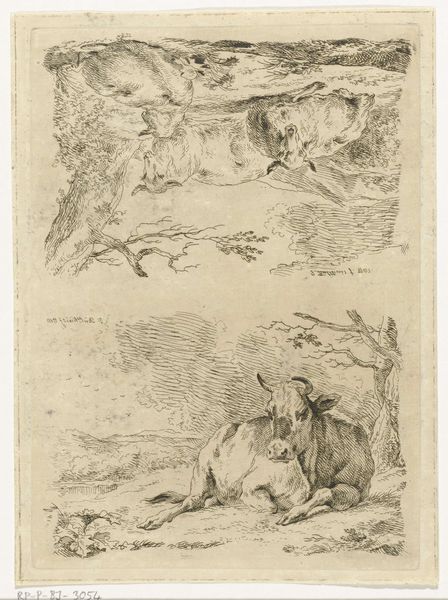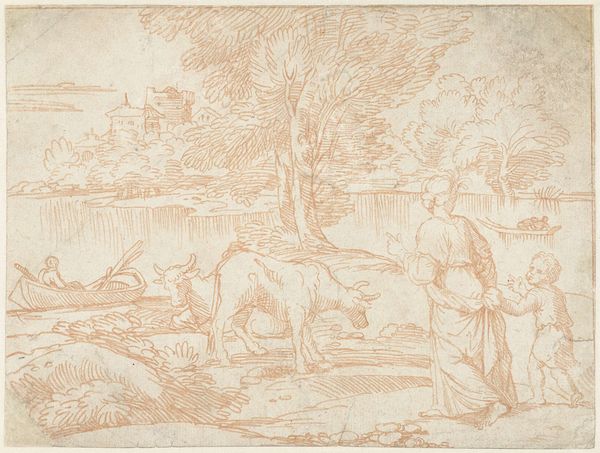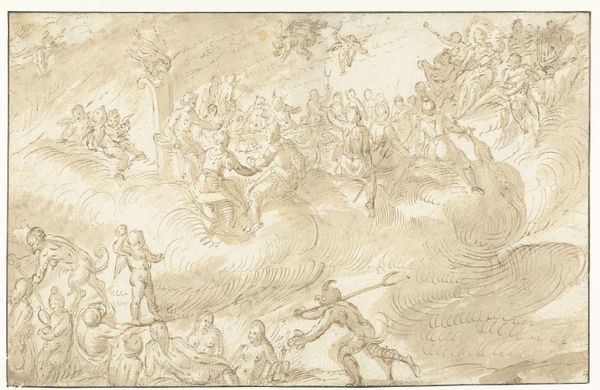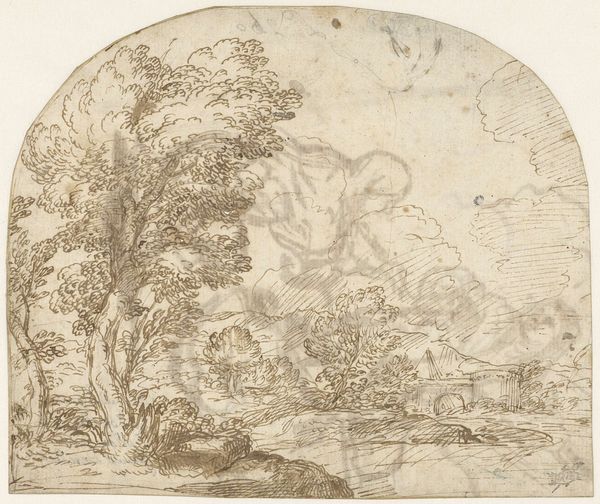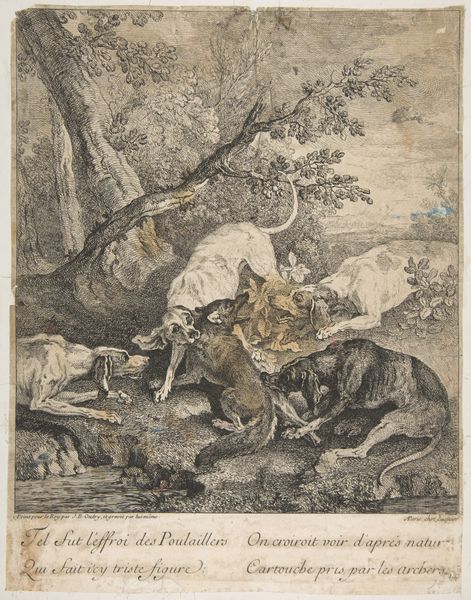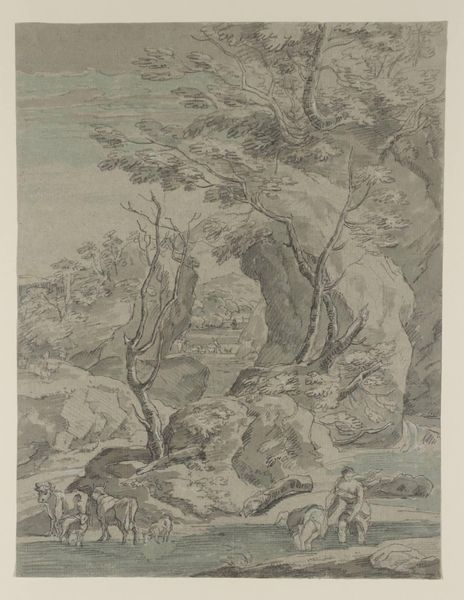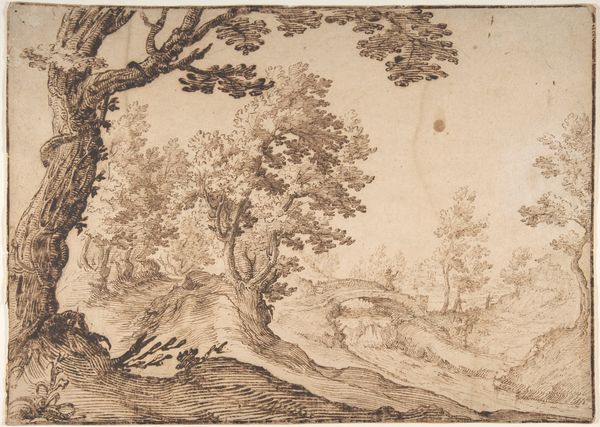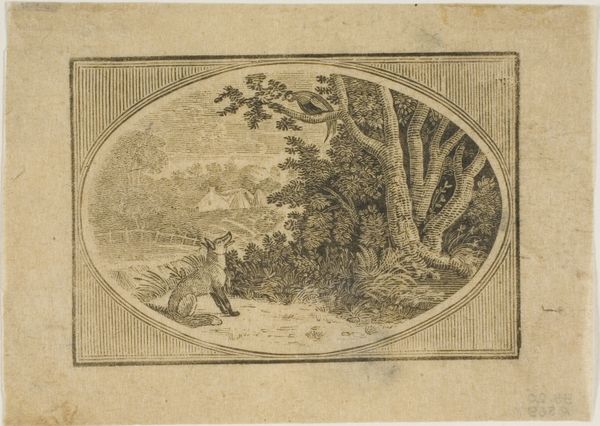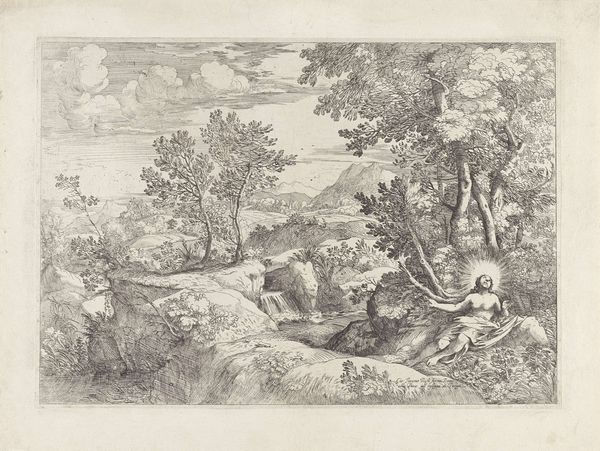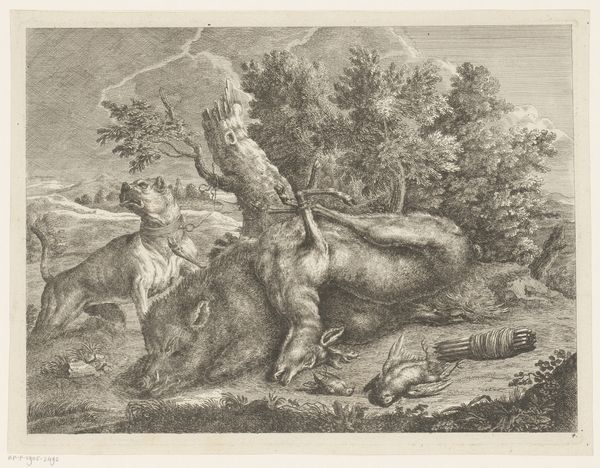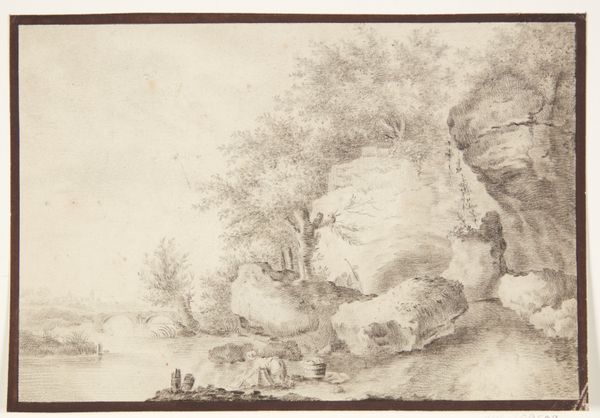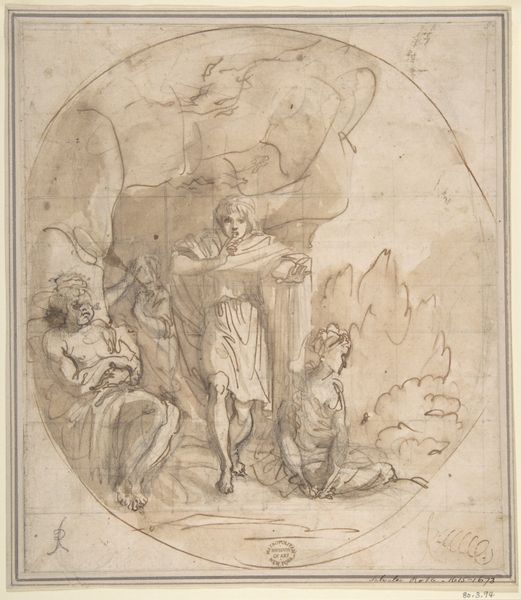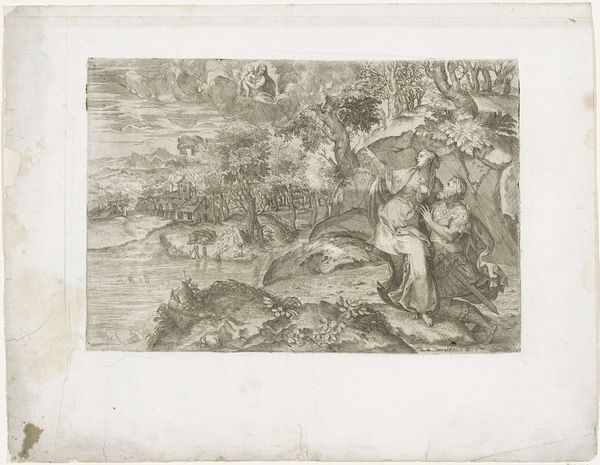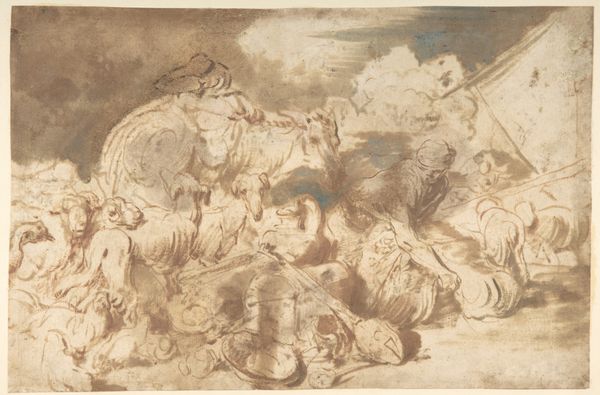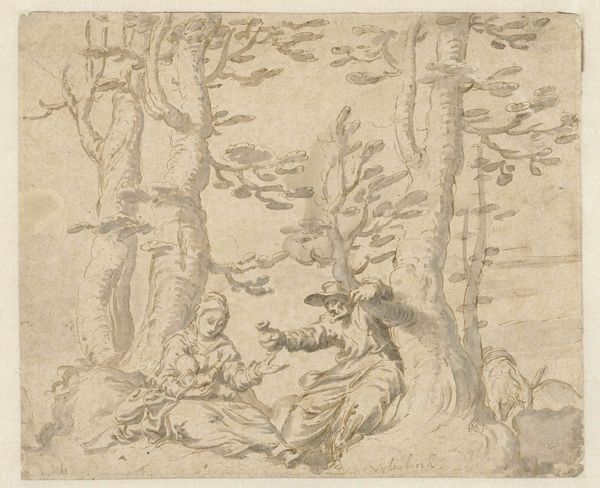
drawing, paper, ink
#
drawing
#
narrative-art
#
landscape
#
figuration
#
paper
#
11_renaissance
#
ink
#
ancient-mediterranean
Dimensions: height 284 mm, width 360 mm
Copyright: Rijks Museum: Open Domain
Curator: This is a drawing, likely from between 1570 and 1620, called "Landscape with Romulus and Remus being suckled by the she-wolf.” The author is unknown. Editor: My first thought? It's melancholy. A landscape rendered in sepia tones, dreamlike and faintly tragic, with a slightly wonky geometric insert toward the upper right. It feels like looking back on something long past and foundational. Curator: Exactly. It's this foundational myth of Rome. Look at how the landscape cradles the she-wolf and the twins. It is like nature herself is nurturing the seeds of civilization—a bit of romanticizing the “natural order,” perhaps? Editor: More than a bit! The Romulus and Remus myth has always been about power, about who has the right to claim and define land and legacy. And here we see the natural world enabling that. I’m wondering, what does it say about the power dynamics in this formative myth that two male founders literally feed off female strength and are being overlooked by the patriarchs? Curator: It's interesting to frame it that way, viewing the feminine as both life-giving and possibly exploited for a traditionally patriarchal origin story. What do you think about the choice of medium, of ink on paper, for such a powerful theme? Editor: The fragility of ink on paper underscores the impermanence of power, perhaps? Myths get rewritten, histories get challenged. Maybe the artist subtly suggests the foundational stories themselves are always up for renegotiation. Look at the almost nonchalant drawing style; like a light sketching rather than any clear ownership to its contents. It feels hesitant almost to place a stamp of authority, instead questioning these tales. Curator: The light style is striking. It also makes you consider those darker aspects—violence, displacement—that get smoothed over in the heroic narratives. And a landscape by an anonymous hand…it almost dares us to impose our own narrative. What do we read into those empty spaces, that vacant land? Editor: So much potential. Perhaps it becomes an encouragement to ask: Whose landscapes, whose origin stories are left untold? Curator: Yes, indeed. It gives you so much to consider about the hidden and more transparent themes when understanding power. Editor: I concur! This piece offers a wealth of knowledge to be explored beyond initial readings and further inspires ongoing questions for modern art critique.
Comments
No comments
Be the first to comment and join the conversation on the ultimate creative platform.
